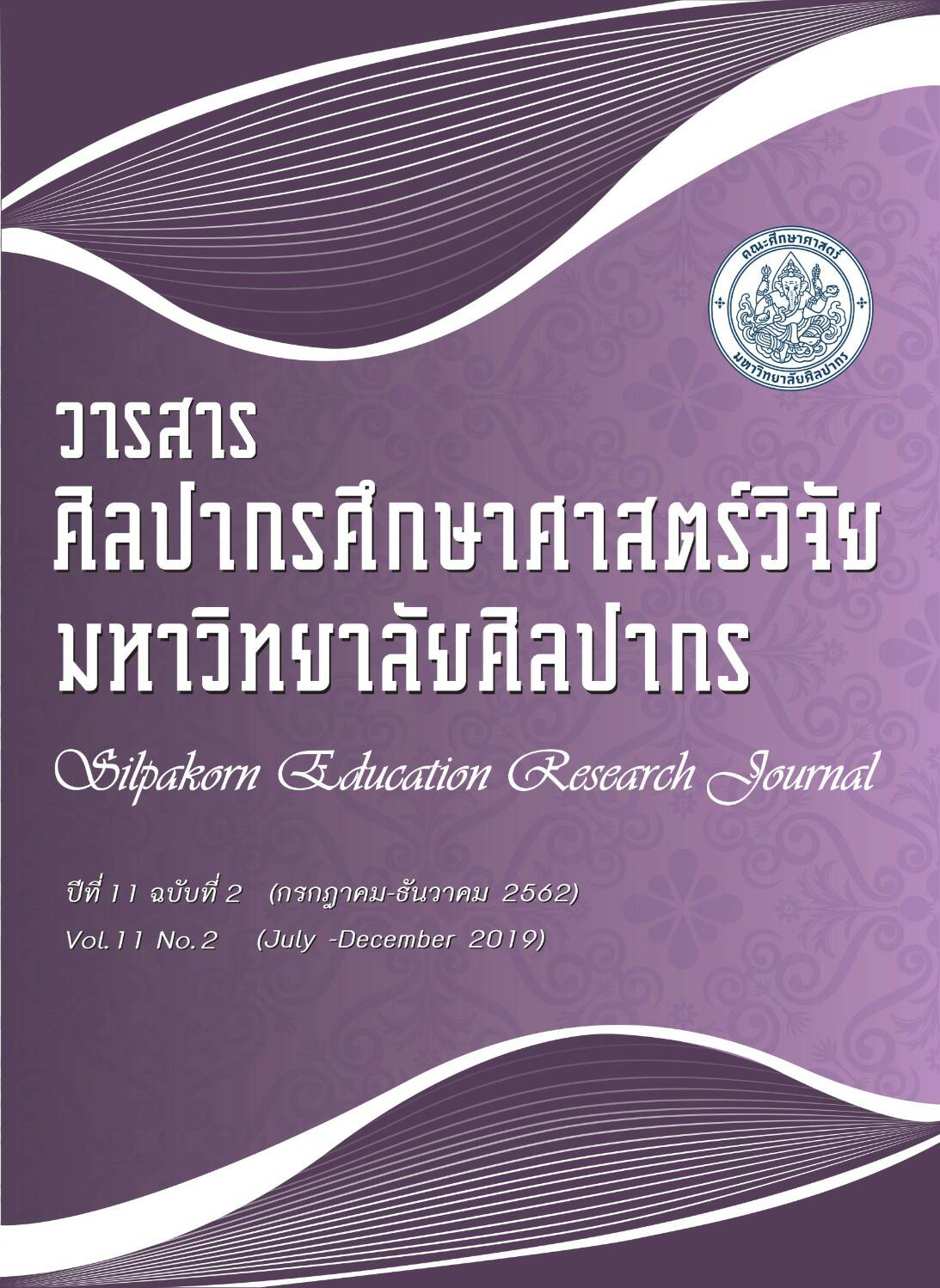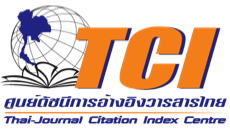การศึกษาพัฒนาการของหลักสูตรภูมิศาสตร์ระดับมัธยมศึกษา (A Study of Development of Geography Curriculum for Secondary Education)
คำสำคัญ:
หลักสูตรภูมิศาสตร์, การนำหลักสูตรภูมิศาสตร์ไปใช้บทคัดย่อ
การวิจัยครั้งนี้มีวัตถุประสงค์เพื่อ 1) ศึกษาพัฒนาการของหลักสูตรภูมิศาสตร์ระดับมัธยมศึกษา 2) ศึกษาพัฒนาการของการนำหลักสูตรภูมิศาสตร์ระดับมัธยมศึกษาไปใช้ 3) นำเสนอแนวทางการพัฒนาหลักสูตรและการนำหลักสูตรภูมิศาสตร์ระดับมัธยมศึกษาไปใช้ รวบรวมข้อมูลจากแบบวิเคราะห์หลักสูตร แบบสัมภาษณ์ผู้เชี่ยวชาญและครู แบบสังเกตการจัดการเรียนรู้ วิเคราะห์ข้อมูลด้วยการวิเคราะห์เชิงเนื้อหา
ผลการวิจัยพบว่า 1) พัฒนาการของหลักสูตรภูมิศาสตร์เป็นการศึกษาเพื่อเข้าใจความสัมพันธ์ระหว่างมนุษย์กับธรรมชาติที่ส่งผลต่อการดำรงชีวิตของมนุษย์ ด้านโครงสร้างเวลาสถานศึกษากำหนดได้ตามความเหมาะสม ด้านเนื้อหาเน้นปัญหาและการจัดการสิ่งแวดล้อม ด้านวัสดุหลักสูตรมีเอกสารหลักสูตรและคู่มือครูเป็นหลัก ด้านการประเมินผลหลักสูตรเน้นการนิเทศติดตามผลการใช้หลักสูตรของสถานศึกษาเป็นสำคัญ 2) พัฒนาการของการนำหลักสูตรภูมิศาสตร์ไปใช้ ด้านการเตรียมการสอน การจัดทำแผนการจัดการเรียนรู้ จัดกิจกรรมในห้องเรียน วิธีการสอน และเทคนิคการสอน เน้นให้นักเรียนได้สร้างประสบการณ์ด้วยตนเอง โดยใช้สื่อ นวัตกรรมทางภูมิศาสตร์เป็นเครื่องมือในการเรียนรู้ การวัดประเมินผลเน้นวัดทักษะการคิดขั้นสูง 3) แนวทางการพัฒนาหลักสูตรและการนำหลักสูตรภูมิศาสตร์ไปใช้ แนวโน้มของภูมิศาสตร์มุ่งเน้นเรื่องสิ่งแวดล้อมและการพัฒนาอย่างยั่งยืน โดยนักเรียนสามารถอธิบายปฏิสัมพันธ์เชิงพื้นที่ได้ด้วยกระบวนการเรียนรู้ทางภูมิศาสตร์จนเกิดทักษะทางภูมิศาสตร์ ด้านการนำหลักสูตรไปใช้ ครูต้องศึกษาเนื้อหาภูมิศาสตร์ด้านสิ่งแวดล้อมโลกให้ทันสมัยอย่างต่อเนื่อง เพื่อออกแบบการจัดการเรียนรู้ให้สอดคล้องกับวัตถุประสงค์ ใช้สื่อการสอนที่เป็นเทคโนโลยีทันสมัย และวัดประเมินผลจากสมรรถนะและทักษะทางภูมิศาสตร์เป็นหลัก
เอกสารอ้างอิง
2. Burirak, T. (1978). Physical Geography. Bangkok: Aksornwattana Publishing. (In Thai)
3. Kent, A., & Foskett, N. (2000). “Fieldwork in Geography: Reflections, Perspectives and Actions”. The GeoJournal Library 54. 171-193.
4. Kent, A., & Kent, W. A. (2000). Reflective practice in geography teaching. Sage: Paul Chapman Publishing.
5. Kongkij, N. (1985). Development of Thai secondary school curriculum during B.E. 2518 - 2527. Master of Education Thesis Program in Educational Research Graduate School Chulalongkorn University. (In Thai)
6. Nillapun, M., Phivitayasirithum, C., Vanichwatanavorachai, S., et al. (2015). “Evaluation of the Basic Education Core Curriculum 2008 in the Leading Schools for Curriculum Implementation”. Silpakorn Educational Research Journal 7 (1): 26-41. (In Thai)
7. Noisangsee, J. (1978). Techniques and methods of teaching geography. Bangkok: Suvicha Publishing. (In Thai)
8. Nursey-Bray, M., & Palmer, R. (2019). Adapting to Change: A Reflective History of Online Graduate Certificate and Its Implications for Teaching Geography.
9. Panbamrungkij, T. (2015). “The Development of Geography in the Contemporary World”. Journal of Social Sciences Srinakharinwirot University 18: (335-352). (In Thai)
10. Rawling, E. M. (1992). “The making of a national geography curriculum”. Geography 77 (4): 292-309.
11. Wichaidit, W., Sirisamphan, O. (2013). “The Development of Geography Instructional Model to Enhance Qualified Charactertics of Undergraduate Students in Social Studies”. Silpakorn Educational Research Journal 5 (2): 167-180. (In Thai)
12. Yindeesug, S., Isarankura na Ayudhaya, W. (2015). “Development of a Social Studies Instructional Model Based on Interactive Constructivist Approach and Self-Regulation to Enhance Critical Thinking and Curiosity of Upper Secondary School Students”. Silpakorn Educational Research Journal 7 (2): 275-287. (In Thai)





